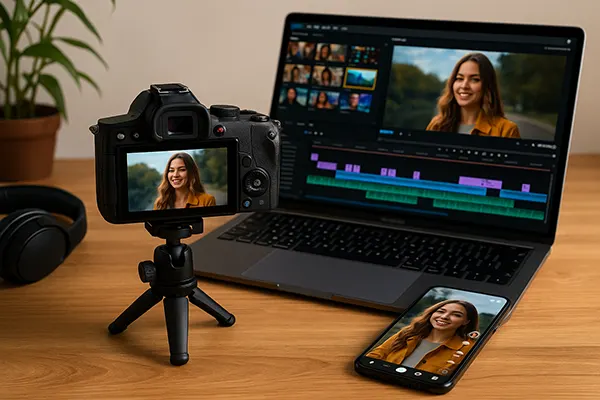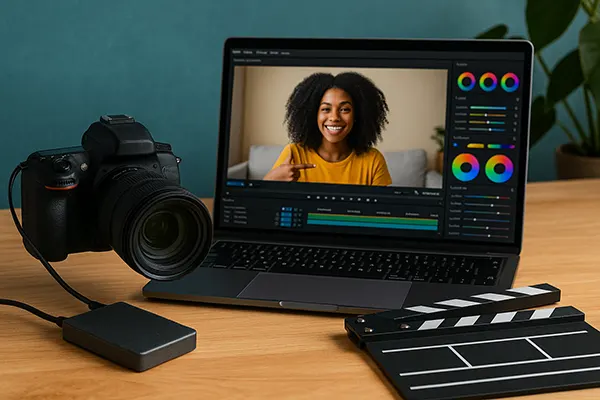How to Generate Text-to-Video Content and Automatically Scale for YouTube Shorts, TikTok, and Reels

In 2025, the rise of AI-assisted creativity has made it possible for individual creators to produce engaging video content at scale. Text-to-video generation is no longer a futuristic concept—it’s a working strategy that lets professionals, freelancers, and small studios transform written ideas into thousands of short-form videos automatically. Below you will find a structured guide explaining how to use automation tools and practical methods to build consistent video flows for YouTube Shorts, TikTok, and Reels.
Understanding Text-to-Video Automation
Text-to-video systems convert written scripts into dynamic clips using AI models trained on visual storytelling. These systems handle narration, visual selection, background music, and even subtitle placement. In 2025, services such as Runway ML, Synthesia, Pika, and HeyGen allow automatic creation of vertical videos from short texts or full-length blog posts.
Most modern tools integrate directly with content schedulers and analytics dashboards, enabling creators to plan releases for multiple networks at once. They can also adapt the same core message to different formats—TikTok trends, YouTube Shorts’ narrative hooks, and Reels’ interactive transitions—without re-editing manually.
The most significant advantage of automation lies in its scalability. Instead of spending hours on manual editing, a creator can upload a script, choose a template, and receive dozens of finished clips optimised for every platform’s aspect ratio and duration limits.
AI Models Behind Text-to-Video Tools
At the heart of text-to-video automation are diffusion and transformer-based models trained to match linguistic meaning with motion, sound, and image. Tools like OpenAI’s Sora or Google’s Veo build coherent scenes by understanding the semantics of text prompts, while smaller APIs use pre-trained datasets for specific themes such as product demos or educational explainers.
Audio-visual alignment has improved dramatically in 2025, allowing models to synchronise lip movements with generated voiceovers and match emotional tone through lighting and pacing. These models also analyse the structure of sentences to decide when to cut scenes or display key phrases on screen.
For professional use, combining several systems is often best—one for generating visuals, another for editing, and a scheduler to handle uploads. The result is a full pipeline that transforms articles, tweets, or newsletters into a daily stream of short-form videos.
Building a Scalable Workflow for Short-Form Platforms
To maintain consistency and quality, automation should follow a structured process. Start with content planning: identify evergreen topics, educational insights, or entertaining micro-stories that can be divided into multiple short clips. Next, prepare concise scripts of 80–150 words each to fit under one-minute formats.
Modern tools allow batch uploads—users can insert dozens of scripts at once, and the system automatically assigns visuals, AI voices, and captions. Most text-to-video engines provide style presets for brand identity, ensuring colour palettes and typography remain uniform across all videos.
Once generated, analytics tools like TubeBuddy, TikTok Studio, or Meta Business Suite can evaluate engagement and retention. Adjusting script tone or clip length based on these metrics helps to improve future automation cycles without rewriting the entire workflow.
Optimising Videos for Cross-Platform Publishing
Each short-form network has specific requirements: YouTube Shorts favour narrative hooks and quick pay-offs, TikTok prioritises trends and sound integration, while Instagram Reels often benefits from clean visual storytelling and text overlays. Automation tools should therefore include export templates for 9:16 ratios, variable durations, and built-in subtitles.
Creators can use APIs or platforms such as Zapier and Make.com to automate uploading. These services connect the video generator with publishing calendars, automatically pushing new clips to multiple channels while maintaining metadata such as hashtags, descriptions, and titles.
Automation also supports A/B testing—two versions of the same clip with different openings or captions can be published simultaneously to evaluate which one drives better audience retention and follower growth.

Ethical and Strategic Aspects of Automated Content
While automation speeds up production, ethical responsibility remains essential. Every generated video must represent truthful information, use licensed assets, and clearly communicate whether synthetic visuals or voices are involved. Transparency strengthens audience trust and aligns with modern digital content standards.
Strategically, automation should complement human creativity rather than replace it. The best-performing channels combine AI-generated foundations with human editing—fine-tuning pacing, humour, and personal tone. This hybrid model ensures that content remains relatable and authentic, while AI handles repetitive visual or editorial tasks.
Finally, scaling responsibly means maintaining quality control. Automated systems can generate thousands of videos, but each should still meet brand and ethical guidelines. Regular audits, content reviews, and metadata checks help ensure consistency and reliability across every publication.
Future of Text-to-Video Creation
By 2025, the boundary between written and visual content continues to dissolve. As language models gain real-time rendering capabilities, creators will soon generate full short-form campaigns directly from blog drafts or newsletters, including captions, thumbnails, and calls to action.
Advancements in generative AI also promise multilingual support, letting the same video exist in multiple languages without losing lip synchronisation or tone accuracy. This global scalability will redefine how brands and educators reach their audiences worldwide.
Ultimately, text-to-video automation empowers individuals and businesses to communicate faster, more efficiently, and more creatively than ever before. Success depends not only on adopting technology but also on maintaining authenticity and delivering real value through every frame.
